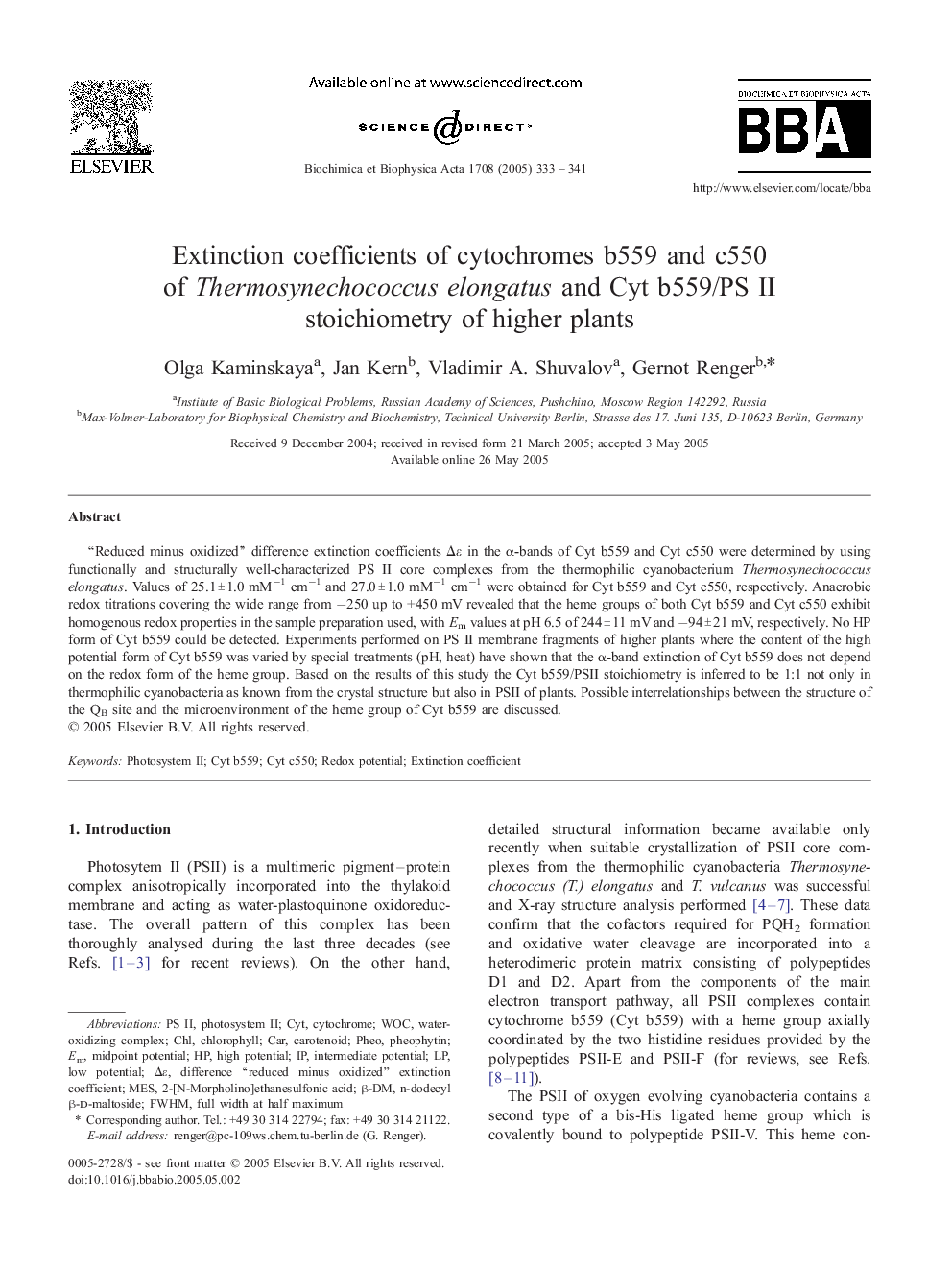| Article ID | Journal | Published Year | Pages | File Type |
|---|---|---|---|---|
| 10796091 | Biochimica et Biophysica Acta (BBA) - Bioenergetics | 2005 | 9 Pages |
Abstract
“Reduced minus oxidized” difference extinction coefficients ÎÉ in the α-bands of Cyt b559 and Cyt c550 were determined by using functionally and structurally well-characterized PS II core complexes from the thermophilic cyanobacterium Thermosynechococcus elongatus. Values of 25.1 ± 1.0 mMâ1 cmâ1 and 27.0 ± 1.0 mMâ1 cmâ1 were obtained for Cyt b559 and Cyt c550, respectively. Anaerobic redox titrations covering the wide range from â250 up to +450 mV revealed that the heme groups of both Cyt b559 and Cyt c550 exhibit homogenous redox properties in the sample preparation used, with Em values at pH 6.5 of 244 ± 11 mV and â94 ± 21 mV, respectively. No HP form of Cyt b559 could be detected. Experiments performed on PS II membrane fragments of higher plants where the content of the high potential form of Cyt b559 was varied by special treatments (pH, heat) have shown that the α-band extinction of Cyt b559 does not depend on the redox form of the heme group. Based on the results of this study the Cyt b559/PSII stoichiometry is inferred to be 1:1 not only in thermophilic cyanobacteria as known from the crystal structure but also in PSII of plants. Possible interrelationships between the structure of the QB site and the microenvironment of the heme group of Cyt b559 are discussed.
Keywords
Related Topics
Life Sciences
Agricultural and Biological Sciences
Plant Science
Authors
Olga Kaminskaya, Jan Kern, Vladimir A. Shuvalov, Gernot Renger,
